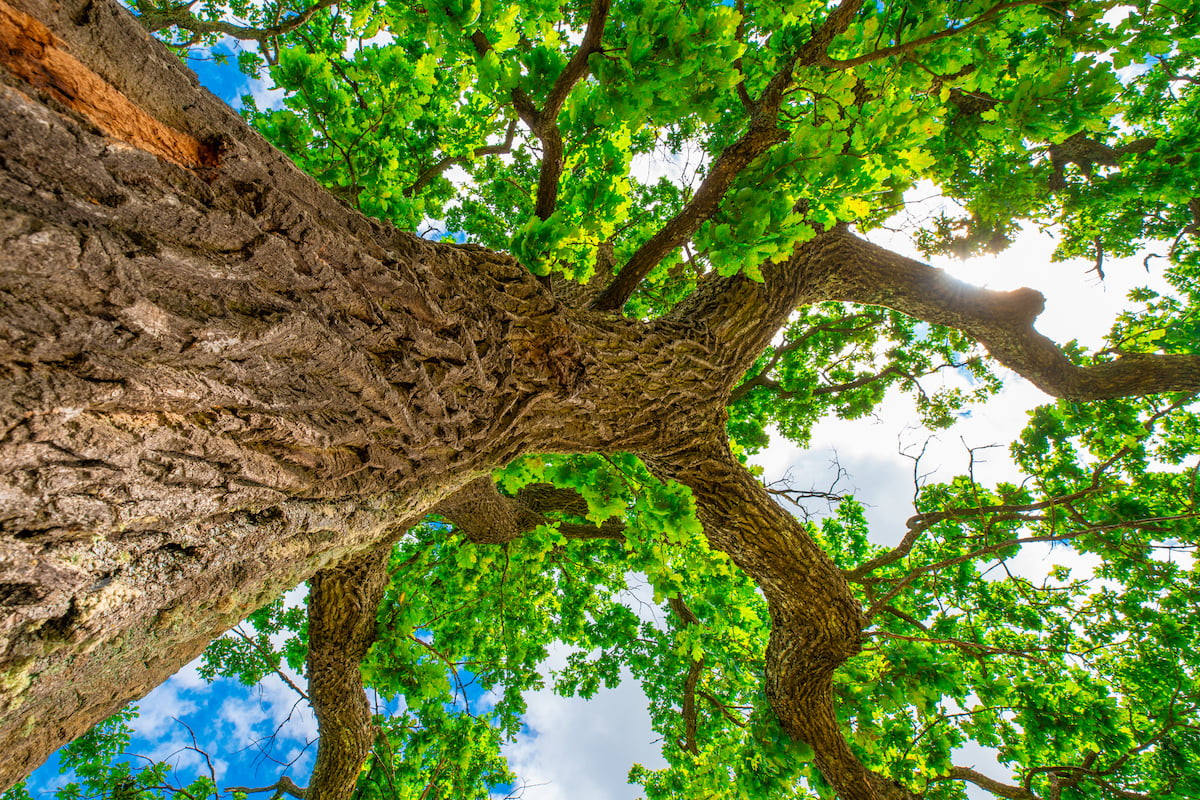Strength, beauty, longevity. These are the types of positive attributes often used to describe oak trees. Yet, like other trees, the unique qualities of oaks are paired with unique susceptibilities — an example of which is oak wilt.
What Is Oak Wilt?
Oak wilt (or Bretziella fagacearum) is a fungal disease that infects the vascular system of oak trees, and — as the name suggests — causes leaves to wilt, become discolored and eventually die.
The roots of this disease can be connected to one of three transmission methods:
- Insect transmission: Beetles and other insects feed on the fungal spores on infected trees and carry these spores to healthy trees.
- Root graft transmission: As the roots of two oak trees meet and merge together, the disease can move from infected trees to healthy ones.
- Firewood transmission: When firewood is moved from an infected tree to a new area, the fungal disease spreads.
Among the oak species, red oak trees are most susceptible to oak wilt, often dying within 1-2 months of being infected. This can be attributed back to the fact that they are often the site of fungal spores, and their symptoms are not always as apparent as in other oak species.
While oak wilt was first recognized as a harmful disease in 1944 in Wisconsin, it has now been confirmed in 24 states across the U.S. — one of which is Michigan. On a statewide scale, the Michigan Department of Natural Resources has identified oak wilt in 61 Michigan counties.
How to Put a Stop to Oak Wilt Before It Appears
With the majority of red oaks unable to recover from oak wilt, the need for proactive measures is clear. Here are some simple yet effective ways to prevent the spread of this damaging disease.
Prune Your Trees in the Winter
Trimming away weak or dead branches from trees — otherwise known as pruning — is one of the most effective ways to keep them strong and healthy. Like other trees, oak trees should be pruned in the winter months. Not only is it easier to identify branch patterns during this time, but there is also less insect activity and subsequent infections to worry about.
In the case of sap beetles, these insects are most likely present between mid-April and mid-July. (Note that some types of beetles can be active during the summer and into the early fall.) These are the times when the risk for infection is highest, and thus pruning should be avoided.
Keep Firewood in One Place
Firewood can be moved many miles from its original location, whether it’s to a vacation property or a campsite. With this transport comes an assumed risk that the firewood may carry a disease that can harm subsequent trees.
If trees infected with oak wilt are cut and used to make firewood, make sure it remains in one area to avoid transmission to healthy trees. A tarp with no holes should cover to firewood so as to prevent beetles from feeding on the sap of the wood and picking up fungal spores.
Safari Tree’s Tree Care Program Can Help
At Safari Tree, we recognize that trees have unique needs and face unique threats. That’s why we’ve developed a comprehensive care program that ensures trees can effectively resist and recover from any number of health issues (oak wilt included).
If you’re a Michigan homeowner in the market for tree care, we encourage you to reach out to the Safari Tree team and request a free quote.
